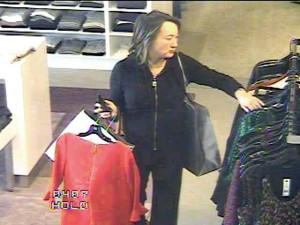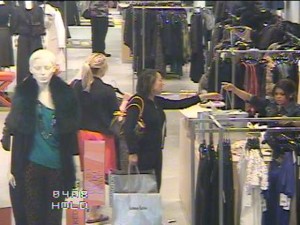The July 23rd Council meeting went extremely long. Mike had gone to speak in favor of a strong privacy policy for surveillance data, and didn’t get to do so until nearly 11. Before that he tweeted from the meeting. My comments are in italics. The Tweets have been organized by subject. Follow him @slbytes.
The only City Council candidates present at the meeting were Mike Katz-Lacabe and Mia Ousley.
San Leandro City Council to discuss Heron Bay wind turbine lawsuit in closed session on Monday 7/21.
Surveillance camera policy is on the agenda for Monday night’s 7/21 San Leandro City Council.
Councilmember Jim Prola is absent from tonight’s San Leandro City Council meeting.
 Congratulations Officer Pickard for being recognized as the City of San Leandro employee of the quarter!
Congratulations Officer Pickard for being recognized as the City of San Leandro employee of the quarter!
Kinkini Banerjee & family accept Proclamation from Mayor Cassidy declaring Aug. 2014 as Indo-American Heritage Month.
Kinkini is one of my best friends and I love her, but I wonder why India West was not invited to receive the proclamation or at least attend the ceremony. India West is the largest Indian-American newspaper in the US, and it’s based in San Leandro!
San Leandro LINKS shuttle: 6.25 mile loop, 23 stops to connect W. San Leandro to downtown BART. Hours: 5:45am-9:45am and 3-7pm
Bike racks added in past year. Avg. 737 riders per day. 191,646 total riders in 2013.
Goals for San Leandro LINKS: shorten route to reduce time, reach Marina Sq./Auto Mall, service to Westgate, Kaiser, 21st Amendment Brewery.
Proposed change to San Leandro LINKs to meet goals: split route into north and south routes to reduce wait and trip times.
Proposed change to San Leandro LINKS will cost: $50k from City, $165k more from business improvement dist. & $130k more from grants/business
Mayoral candidate Diana Souza sounds supportive of San Leandro LINKS. She voted against it on 3/16/09.
Former San Leandro Councilmember Gordon Galvan is Exec Dir of San Leandro Transportation Mngmnt Org, which runs LINKS shuttle.
Mayor Cassidy wants to add San Leandro to the LINKS shuttle name a la “Emery Go Round” since the City will be partially funding it.
Diana Souza had been very critical of the LINKS shuttle until now. Her change of face is interesting. Gordon Galvan, who not only runs the shuttle but is also a lobbyist, was one of main contributors to Cassidy’s campaign.
Liens
San Leandro City Council voted 6-0 to impose liens for non-payment of bus. license fees, garbage fees, sidewalk repairs, and code compliance.
Among those with liens imposed by San Leandro for non-payment of business license fees: Diana Souza campaign mgr Charles Gilcrest.
I was at the council meeting last year where the Council voted to place liens and one of the business owners who appeared complained about the cumbersome system for paying business license fees, the immediate fines and lack of communication from the city. Apparently things haven’t changed as there were many liens imposed.
Floresta Gate
Much discussion about a gate for the Floresta Gardens neighborhood.
Karen Williams of Floresta Gardens asking for gate to reduce crime from non-residents. City discourages gates communities.
San Leandro City Council approves gate on Caliente Drive for Floresta Gardens neighborhood 4-2. Gregory and Lee vote no.
Facebook comment: A neighborhood in Fremont was asking for a gate along the Alameda Creek a few years ago. After a few months of curfew enforcement and checks at the location of concern we found most of the trouble actually originated from the HOA family members and guest.
Public Comments
First speaker addresses issue of children arriving in US from Central America.
Second speaker supports San Leandro Marina. Work session Mon. 7/28 on marina and shoreline.
Marijuana Dispensaries
San Leandro selects ICF International to help craft dispensary selection process. Mass. paid $335,449 to ICFI for similar work.
San Leandro Councilmember Diana Souza recuses herself because son works for pot dispensary that will apply for San Leandro dispensary.
Nothing in the government code requires Souza from disqualifying herself from this situation, but she doesn’t want to be in record voting against medical marijuana facilities. Alas, she has been on the record speaking and voting against them before. Souza, however, did not feel she needed to recuse herself on a vote concerning the property belonging to her own campaign manager.
Surveillance Cameras
Next up: vote on 36 cameras to monitor San Leandro City Hall and other city properties.
Mayor Cassidy clarifies that the upcoming vote does not approve a policy or anything to do with public surveillance cameras.
San Leandro Councilmember Benny Lee asks about backup of the data and whether backups are encrypted: Answer from staff: I believe so.
San Leandro City Council candidate Mia Ousley notes deficiency in draft surveillance camera policy and confusion about the agenda item.
San Leandro City Council votes 6-0 to approve $156k contract with Odin Systems for City Hall cameras. Not sure if it was sole source contract [later confirmed it was].
Pittsburg PD purchased cameras from Odin Systems. SLPD Chief Sandra Spagnoli used Pittsburg as example of video surveillance success.
However, San Leandro had greater reduction in crime without cameras than Pittsburg with cameras.
Odin Systems recently “donated” 60-inch monitor to Pittsburg PD, which paid thousands for cameras from them
No bid contract approved by San Leandro City Council Mon. 7/21 includes cameras with microphones for audio surveillance [which is unconstitutional].
Facebook comment from Mia Ousley, who was also at the meeting:
Only 3 people spoke out at last night’s meeting — all against the policy as is. However, in a confusing intro, Mayor Cassidy said the Council was not voting on a potential future plan to increase the number of cameras, which is what was written in the printed or online agenda. He said that information was only in the title and was misleading. However, I don’t see it that way at all, so it’s unclear to me what the Council actually unanimously agreed to — just replacing the current cameras at our Civic Center or a plan to install cameras at other areas in the city in the future. So I decided to address that issue anyway, saying oversight must be by a neutral party, and that decisions should come from the City Council, which would allow thorough vetting by the public.
Mike Katz-Lacabe agreed, and also discussed additional security and privacy issues that were not addressed in the proposed policy.
Darlene Evans was the only other speaker on the topic, saying her bike had been stolen from the library, where there was a camera, but the officers there told her spiders covered the camera and they couldn’t see anything.


 It was one of the loss prevention agents who watched Mary through the slats of her dressing room door,
It was one of the loss prevention agents who watched Mary through the slats of her dressing room door,  We see
We see e of privacy, surveillance cameras and see-through dressing room doors. The latter matter is, perhaps, the most blatantly obnoxious. Many people are modest and don’t want to be seen naked by others – be they store employees or anyone else walking by. That’s why dressing rooms exists in the first place. While in this case the loss prevention agent actually caught Mary hiding store merchandise, it’s likely that in many cases they observe completely innocent people in their underwear. I think that at the very least consumers should be informed that they can be seen while changing with the doors closed.
e of privacy, surveillance cameras and see-through dressing room doors. The latter matter is, perhaps, the most blatantly obnoxious. Many people are modest and don’t want to be seen naked by others – be they store employees or anyone else walking by. That’s why dressing rooms exists in the first place. While in this case the loss prevention agent actually caught Mary hiding store merchandise, it’s likely that in many cases they observe completely innocent people in their underwear. I think that at the very least consumers should be informed that they can be seen while changing with the doors closed. The surveillance issue is also troubling. Mary was in a store and she probably knew that there were cameras. I doubt, however, that most consumers realize just how intrusive these cameras can be. Shoppers are unlikely to be aware that a camera mounted on the other side of the room can zoom on their faces so precisely that someone could read their lips and eavesdrop into private conversations. They are probably not aware that the cameras can also zoom onto the screens of any papers or screens they have with them, potentially recording private information. A shopper who sees a person looking at what they are holding or studying their mouth movements, would probably walk away; cameras do so undetected.
The surveillance issue is also troubling. Mary was in a store and she probably knew that there were cameras. I doubt, however, that most consumers realize just how intrusive these cameras can be. Shoppers are unlikely to be aware that a camera mounted on the other side of the room can zoom on their faces so precisely that someone could read their lips and eavesdrop into private conversations. They are probably not aware that the cameras can also zoom onto the screens of any papers or screens they have with them, potentially recording private information. A shopper who sees a person looking at what they are holding or studying their mouth movements, would probably walk away; cameras do so undetected.








